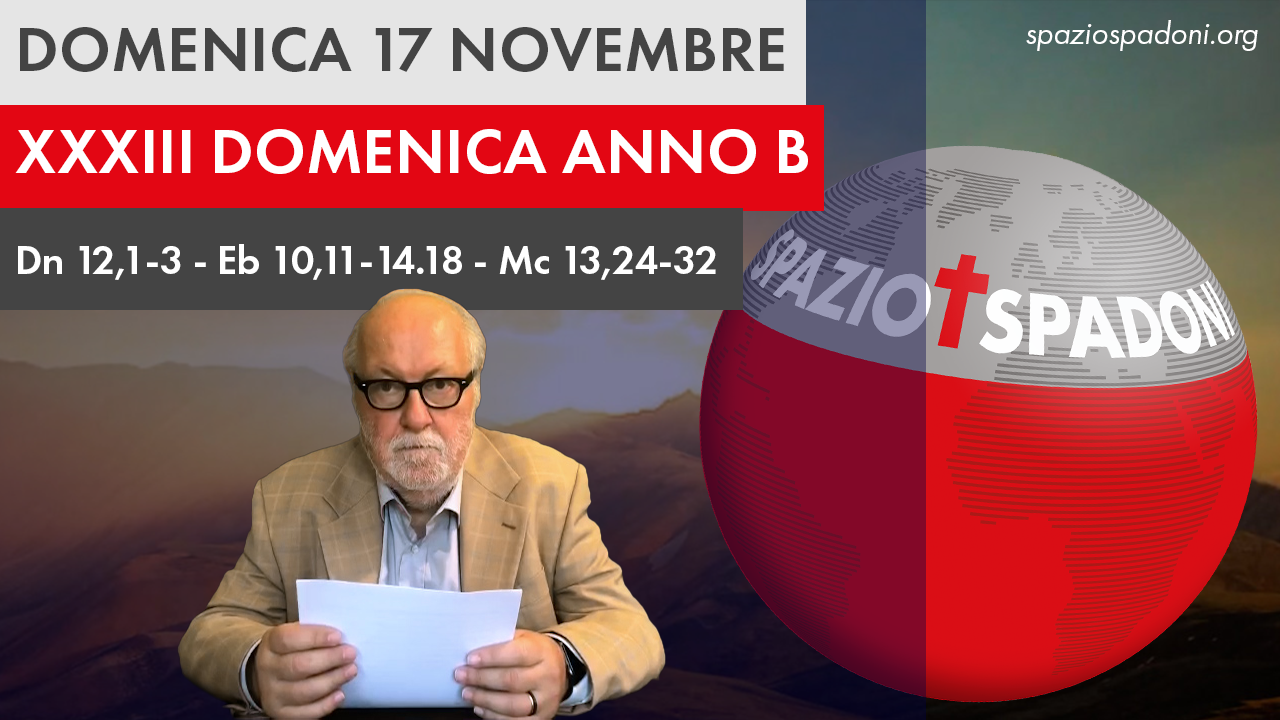
Sunday XXXIII Year B – Between the “already” and the “not yet”
Readings: Dan 12:1-3; Heb 10:11-14.18; Mk 13:24-32
The apocalyptic genre (from “apo-kaluptein” = “s-veil”, to remove the veil of mystery) is a rethinking of the prophetic announcements concerning God’s interventions in history, but above all an imaginative reinterpretation of the theology of the “Day of IHWH”: it would be the time of God’s final judgment against the unfaithful nations and against sinful Israel itself (Is 13:6-13; Zeph 1:14; Gl 4:14-20; Zech 14:1; Ml 3:14-19. ..), but also of salvation of the righteous after a time of tribulation and affliction, with earthly or future retribution (Dan 9; 11; 12: First Reading). In a time of crisis and oppression, hope is renewed in God who, through his Messiah, will intervene to defeat the wicked and make the good triumph.
Jesus uses this symbolic literary genre when speaking to us of the “beginning of sorrows” (Mk 13:8) (cf. “labor pains”: Rom 8:22; Rev 12:2) to express the condition of suffering and pain in which every man lies because of his creaturehood and the internal logic of this world, but from which God will draw a new creation.
The “abomination of desolation” (Mk. 13:14) refers to Daniel’s prophecy (Dan. 9:27; 11:31; 12:11), when Antiochus IV Epiphanes in 168 B.C. desecrated the Temple by placing in it the statue of Zeus Olympus: among the various interpretations, the reference to the Death of Jesus himself, when the very Son of God is by the High Priests handed over to the pagans, seems clearest. Following a typical apocalyptic pattern (wonders in heaven, glorious advent of the Messiah, reunion of the elect), today’s Gospel (Mk 13:24-32) describes the subsequent triumph of Christ: in Mark, unlike in Matthew (Mt 24), there is no mention of the end of the world. When it speaks of the end of the sun, moon, stars and powers of heaven (Mk 13:24-25), it alludes to the end of all idolatry, because the stars and heavenly powers were considered gods: they will cease to be worshiped and there will be the triumph of the Son of Man, that is, Jesus, as also announced in the Second Reading (Heb 10:11,14-18).
“Nothing in these words, nor in the basic little Jewish apocalypse, announces anything other than the impending messianic crisis and the expected deliverance of the chosen people, which was in fact fulfilled with the ruin of Jerusalem, the resurrection of Christ and his coming in the Church” (Jerusalem Bible). The reference to Jesus’ paschal mystery is obvious: “This generation shall not pass away before all these things have come to pass” (13:30). Calvary is the true Armaghedon (Rev. 16:16), the place of the final defeat of the forces of evil: in fact, Armaghedon means “place as at Meghiddo,” the place where a righteous and pious king dies for the salvation of all the people (Josiah, in 609, fighting against Pharaoh Necao: 2 Kings 23:29-30). It is in the Death and Resurrection of Jesus that Christ’s victory over evil and death, the judgment of the wicked and the salvation of the righteous, has already been definitively accomplished, “once and for all,” as the Second Reading (Heb. 10:11-14, 18) makes very explicit.
In God’s eternity, we therefore already participate in Christ’s paschal triumph: for us, in faith, it is already present reality! But until we step out of our space-time reality, entering by our death into God’s infinity as well, we still undergo evil and suffering. Jesus’ apocalyptic discourse is a great proclamation of hope and deliverance. The moment of the encounter with God in our lives is certain, like the summer when the fig tree blooms (13:28-29): but no one knows it but the Father (13:32): all that is left for us is to keep watch, living the present with hope, serenity and commitment, leaving to others, in the various millenarianisms, the calculations, the fear, the catastrophic predictions.
